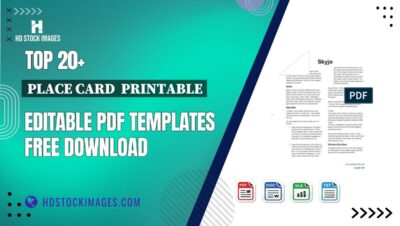Are you a photographer, illustrator, or videographer looking to monetize your creative talents? iStock may be the perfect platform for you! As a leading stock media library, iStock offers a vast marketplace for your images and videos, connecting you with businesses and individuals in need of high-quality visual content. With millions of downloads and a growing demand for unique visuals,
Understanding the iStock Platform

iStock is part of Getty Images, a giant in the visual content industry. It provides a user-friendly platform where contributors can sell their work and buyers can easily find what they need. Here’s a closer look at how it works:
- Contributor Registration: The first step is signing up as a contributor. You’ll create an account, submit a few samples of your work, and wait for approval. Make sure your images meet their quality standards!
- Submitting Your Work: Once approved, you can start uploading your content. iStock accepts various types of media, including photos, illustrations, and videos. Be sure to add relevant keywords and descriptions to help your work get discovered.
- Pricing and Royalties: iStock determines the pricing of your content based on its exclusivity and your experience as a contributor. You’ll earn royalties every time someone downloads your work. The more you upload and the better your sales, the higher your potential earnings!
Understanding the licensing options is also crucial:
| License Type | Description |
|---|---|
| Standard License | Allows users to use your content for a variety of purposes, including websites and social media, but not for resale or merchandise. |
| Extended License | Offers broader usage rights, including print-on-demand services, and typically pays higher royalties. |
iStock also offers tools and resources to help you succeed:
- Analytics Dashboard: Keep track of your earnings and see which of your works are performing well.
- Educational Resources: Take advantage of tutorials, webinars, and community forums to improve your skills and learn strategies for better sales.
In summary, iStock is a vibrant platform that not only allows you to share your creativity but also provides you with the tools and support to grow your business. Navigating the platform might seem daunting at first, but with some persistence and the right approach, you can turn your passion into profit!
Also Read This: How Does iStock Pay Contributors? A Guide to Earnings and Payments
3. Requirements for Becoming an iStock Contributor
If you're dreaming of making money through iStock, the first step is understanding what’s required to become a contributor. While the process is straightforward, meeting these requirements will set you up for success.
1. Age Requirement: You must be at least 18 years old to create an account and submit your content. If you're younger, consider collaborating with a parent or guardian.
2. Portfolio of Work: Before you apply, it's a good idea to have a diverse portfolio ready. iStock wants to see your best work, so select around 10-15 of your best pieces. This can include photos, illustrations, or videos, depending on your focus.
3. Account Setup: Sign up on iStock as a contributor. This involves creating an account and providing some personal information. Be prepared to share your payment details for when you start earning!
4. Knowledge of Licensing: Familiarize yourself with licensing agreements. You need to understand how licensing works on iStock, including the differences between royalty-free and rights-managed content.
5. Technical Requirements: Ensure you have access to good-quality equipment. For photography, a DSLR or mirrorless camera with high resolution is ideal. If you're creating illustrations, having a graphic design software like Adobe Illustrator or Photoshop is essential.
6. Quality Standards: iStock has specific criteria for what they accept. Your submissions must be technically sound, well-composed, and relevant to current trends. They also have strict guidelines regarding the minimum resolution, so make sure your images are clear and high-quality.
Once you meet these requirements, you're on your way to becoming an iStock contributor! Remember, it's not just about meeting the criteria but also about continuously improving your skills and adapting to market needs.
Also Read This: Exploring iStock Sport Content: What Types of Media Are Available?
4. Types of Content You Can Sell on iStock
One of the most exciting aspects of being an iStock contributor is the variety of content types you can sell. Here’s a breakdown of the main categories:
- Photos: This is the most common type of content. You can sell everything from landscapes and portraits to lifestyle shots and abstract images. Focus on unique angles and often-overlooked subjects!
- Illustrations: If you have a knack for drawing or design, illustrations can be a lucrative option. Vector graphics, infographics, and hand-drawn elements are in high demand.
- Videos: Short clips for promotional content are increasingly popular. Think about creating time-lapse videos, tutorials, or unique storytelling snippets that can catch a viewer's eye.
- Audio: If you're musically inclined, consider creating sound clips or music tracks. Background music, sound effects, and jingles can add value to multimedia projects.
Moreover, you can explore niche markets. For instance, if you’re passionate about sustainability, create content that highlights eco-friendly practices. If travel excites you, capture scenic shots from your adventures!
In addition to the types, remember to keep a pulse on current trends. Popular themes can change, so regularly research what's in demand. This might mean seasonal content, such as holiday-themed images or industry-specific visuals.
Ultimately, the more diverse your portfolio, the better your chances of making sales on iStock. Embrace your creativity and don’t hesitate to experiment with different styles and formats!
Also Read This: How to Download iStock Images Without Watermarks Legal Solutions
5. How to Optimize Your Submissions for Success
When it comes to making money on iStock, the quality and relevance of your submissions are crucial. To stand out in a crowded marketplace, you'll want to optimize your contributions effectively. Here’s how:
- Understand the Market Demand: Before you dive into shooting or designing, take some time to explore what's trending on iStock. Use the search function and look at the popular collections or best-selling images. This will give you a clear idea of what buyers are looking for.
- Focus on Quality: High-resolution images are a must. Ensure your photos are well-lit, properly composed, and free from noise. For vector graphics, make sure your designs are clean and scalable. Remember, buyers are looking for professional quality!
- Use Relevant Keywords: Keywords are your best friends! Choose keywords that accurately describe your image and that are also popular search terms. Think about what someone would type in to find your image. Use tools like Google Trends or keyword planners to find the best options.
- Write Compelling Descriptions: A well-crafted description can make a significant difference. Describe your image, its context, and how it can be used. Include keywords naturally in your description to help improve visibility.
- Submit a Variety of Content: Don’t pigeonhole yourself! Submit a mix of images, vectors, videos, and illustrations. This diversity can catch the eyes of different buyers and increase your chances of sales.
Remember, consistency is key. Regularly updating your portfolio with fresh content can help you stay relevant and increase your chances of being featured. It's not just about quantity; it's about crafting a well-rounded and quality collection that resonates with potential buyers.
Also Read This: How iStock Works – A Complete Overview for Buyers and Sellers
6. Marketing Your iStock Portfolio
Once you've curated a fantastic portfolio on iStock, the next step is to get it seen! Marketing your work effectively can significantly enhance your visibility and sales. Here are some strategies to consider:
- Leverage Social Media: Platforms like Instagram, Pinterest, and Facebook can be powerful tools for showcasing your work. Create visually appealing posts featuring your images and include links to your iStock portfolio. Engage with your audience through stories, polls, and comments to build a community around your art.
- Create a Personal Website or Blog: Having a dedicated website allows you to showcase your portfolio, share your creative process, and connect with potential clients. Use SEO techniques to drive traffic to your site. A blog can be a great way to write about your experiences, tips, and even behind-the-scenes peeks into your creation process.
- Join Online Communities: Participate in photography or design forums and groups. Share your work and insights, but be careful to engage in a way that isn’t just promotional. Building relationships can lead to collaboration opportunities and increased visibility.
- Utilize Email Marketing: If you have a mailing list, don’t hesitate to send updates about new uploads or interesting projects. Offer exclusive content or discounts to keep your subscribers engaged and interested in your work.
- Network with Other Creatives: Attend local art shows, workshops, or online webinars. Networking can lead to collaborations or referrals that can help you reach a broader audience.
Ultimately, marketing your iStock portfolio is about connecting with potential buyers and showcasing the unique value of your work. Don't be afraid to experiment with different strategies until you find what resonates best with your audience. Good luck!
Also Read This: Can You Use iStock Photos with Watermarks? Ethical and Legal Considerations
7. Tips for Maximizing Your Earnings on iStock
If you're diving into the world of iStock as a contributor, it's essential to approach it strategically to maximize your earnings. Here are some practical tips to help you on your journey:
- Focus on Quality Over Quantity: It might be tempting to upload as many images as possible, but high-quality, well-composed images will stand out more. Invest in good equipment and editing software to enhance your submissions.
- Research Trends: Keep an eye on current trends in the market. Seasonal themes, popular color palettes, and trending subjects can boost your visibility. For instance, during the holiday season, images related to celebrations and gift-giving see a spike in demand.
- Optimize Keywords: Use relevant keywords when uploading your images. Think like a buyer; what terms would they search for? Ensure that your keywords accurately describe your image to enhance discoverability.
- Diversify Your Portfolio: Don’t just stick to one niche. Explore different themes and subjects. A varied portfolio can attract a wider audience and increase your chances of making sales.
- Promote Your Work: Utilize social media platforms and personal websites to showcase your iStock portfolio. Engaging with potential buyers through these channels can drive more traffic to your images.
- Engage with the iStock Community: Participate in forums and groups for iStock contributors. Sharing experiences and tips can provide valuable insights and help you stay motivated.
- Regularly Update Your Portfolio: Keep your portfolio fresh by regularly uploading new content. This not only keeps your work current but also signals to buyers that you’re an active contributor.
By implementing these strategies, you can significantly enhance your potential earnings on iStock and build a successful career as a contributor.
8. Common Mistakes to Avoid as an iStock Contributor
While navigating the iStock platform, it’s easy to make mistakes that could hinder your success. Here are some common pitfalls to avoid:
- Ignoring Licensing Restrictions: Each stock agency has specific licensing rules. Failing to adhere to these can result in your images being rejected or removed. Always read the guidelines carefully before uploading.
- Submitting Low-Quality Images: Grainy, poorly lit, or poorly composed photos won’t sell. Always aim for the highest quality and review your work critically before submission.
- Overlooking Model and Property Releases: If your images include people or private properties, ensure you have the necessary releases. Without these, your images may be rejected or limited to editorial use only.
- Neglecting Metadata: Failing to provide accurate and detailed metadata can lower your image’s chances of being found. Take time to tag your images correctly with relevant keywords and descriptions.
- Being Inconsistent: Uploading sporadically can hurt your visibility. Buyers tend to favor contributors who regularly add new content, so make a consistent effort to update your portfolio.
- Not Researching Competitors: Take a look at what other successful contributors are doing. This can inspire you and help you identify gaps in the market you can fill.
- Forgetting to Engage with Feedback: If you receive feedback from iStock, take it seriously. Adjusting your work based on constructive criticism can significantly improve your chances of success.
By steering clear of these common mistakes, you’ll be better positioned to thrive as an iStock contributor and maximize your earnings potential.
 admin
admin








